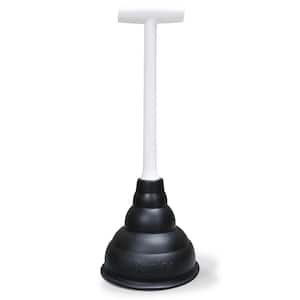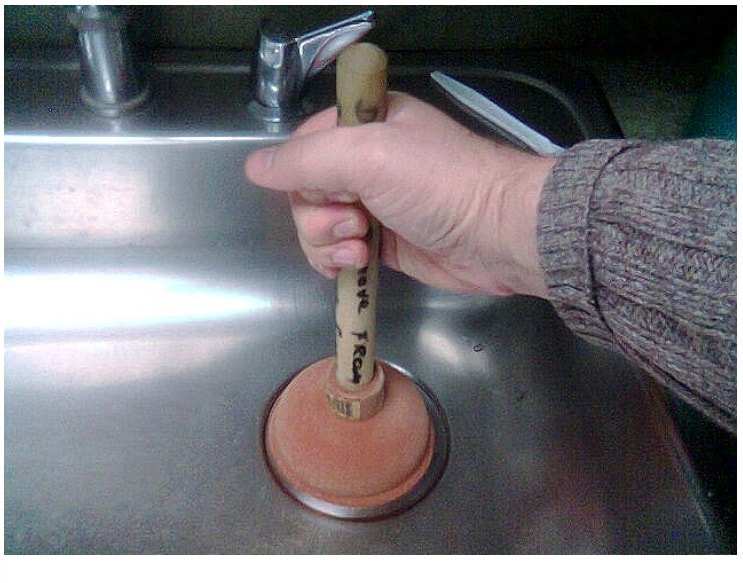Using Plungers and Drain Cleaner: Successful Approaches
Using Plungers and Drain Cleaner: Successful Approaches
Blog Article
In this article in the next paragraphs you will discover a bunch of really good information and facts all about How to Unclog Your Sink with a Plunger.

Introduction
Proper upkeep of household drains pipes is vital for stopping clogs and making sure smooth water flow. One of the secret devices in every property owner's toolkit is the plunger, along with various drainpipe cleaners designed to deal with stubborn obstructions effectively. This write-up explores how to utilize plungers and drainpipe cleaners properly to keep your drains pipes moving freely.
Area 1: Understanding Plungers
Kinds of Plungers
There are numerous types of plungers offered, each created for various sorts of drains and clogs. One of the most usual types include cup bettors, flange plungers, and accordion bettors.
Exactly How Plungers Work
Bettors service the principle of producing stress and suction to dislodge blockages. When appropriately used over a drain, they produce a vacuum that can take out debris or separate blockages.
Selecting the Right Plunger
Selecting the right bettor depends upon the type of drainpipe and the nature of the clog. Mug plungers are excellent for sinks and tubs, while flange bettors are much better suited for bathrooms as a result of their design.
Common Errors with Bettors
Avoiding these errors ensures efficient plunging: incorrect seal around the drainpipe, not enough pressure, and unclear bordering debris.
Section 2: Using Plungers Efficiently
Prep work
Prior to diving, make certain the bettor covers the drainpipe totally and develops a tight seal. Clear any visible debris around the drainpipe opening.
Technique
Start with gentle diving activities to construct suction. Rise pressure gradually, using a stable rhythm. Repeat as essential until the drain removes.
Repairing Tips
If diving doesn't work, try changing the seal, using oil jelly for a far better seal, or using a different type of plunger.
Section 3: Comprehending Drain Cleansers
Kinds Of Drainpipe Cleansers
Drain cleansers can be chemical or chemical. Chemical cleansers use strong chemicals to dissolve clogs, while chemical cleaners utilize natural enzymes to break down organic matter.
Just How Drain Cleaners Work
Chemical cleaners react with clogs to dissolve them, while enzymatic cleaners break down organic materials like hair and oil without damaging pipelines.
Safety and security Factors to consider
Constantly put on handwear covers and eye security when utilizing chemical drain cleansers. Ensure ample air flow and comply with producer instructions carefully.
Eco-Friendly Alternatives
Take into consideration making use of vinegar and baking soft drink or enzyme-based cleaners for environmentally friendly options that are much safer for pipes and the atmosphere.
Area 4: Utilizing Drain Cleaners Effectively
Application Techniques
Put chemical cleansers straight into the drain opening. Enable them to benefit the advised time before flushing with hot water. Enzymatic cleansers need to rest overnight.
Precautions
Prevent mixing different kinds of cleansers, as this can create poisonous fumes. Never ever make use of chemical cleansers in conjunction with a plunger, as splashing can take place.
Handling Persistent Obstructions
For persistent obstructions, consider making use of a plumbing snake or calling an expert plumbing professional to avoid damage to pipelines.
Verdict
To conclude, comprehending exactly how to use plungers and drainpipe cleansers efficiently is important for keeping healthy and balanced pipes systems. By selecting the right devices and techniques, home owners can tackle minor obstructions and protect against major pipes concerns down the line.
How To Properly Use A Plumbing Snake To Clear Drains
When any drain clogs in our home arise, we tend to gravitate toward the plunger and little else. In cases where the plunger and its vacuum-created pressure are not able to clear clogs, many immediately move to harmful chemicals or simply call their plumber to fix the issue.
we’re happy to help with all drain cleaning needs and concerns. This includes informing you on a few other home remedies you may have at your disposal for minor to moderate clogs, one of which is the use of a plumbing snake. Many people have never used one of these before – let’s go over the steps to take when your drain clogs and you have a plumbing snake available.
Attempt Plunger Use
The first step here, as we noted above, should indeed be to grab your plunger when you notice a drain clog and attempt to resolve it this way. If you’re unsure how to use a particular type of plunger, our plumbers can answer any questions you have. If this doesn’t do the trick, however, you move on to the snake.
Locate And Prepare Snake
A plumbing snake is a metal or plastic device that’s generally about a quarter of an inch thick. It’s design with significant extensions, meant to reach down into your clogged drain and push the clog out. Snakes also contain drain augers that will latch onto and push stubborn blockages.
If your plunger doesn’t clear a clog, locate your snake and bring it to the drain in question. We also recommend keeping a bucket nearby to collect the clog once you pull it out, plus we’d advise wearing goggles and possibly protective gloves.
Feed Snake
Once you’re ready to go, feed the snake slowly down the drain, using the crank device it comes with to keep it moving until it finds the clog. Once this happens, much of the clog will be latched onto the coil so you can pull it out, while the rest will simply break up and flow downward.
Detach Debris
Remove the snake slowly from the drain, and once you’ve done so, pick off any debris that’s stuck to the coil. This is another area where wearing gloves is a must.
Flush Drain
Finally, take a few minutes to ensure the snake has done its job correctly. If you’ve been using it on a toilet, flush the toilet a couple times and make sure everything flows well. If you’ve used it on a different drain, flush it with some room temperature water.
https://www.mybuddytheplumber.com/blog/how-to-properly-use-a-plumbing-snake-to-clear-drains/

Application Techniques
Put chemical cleansers straight into the drain opening. Enable them to benefit the advised time before flushing with hot water. Enzymatic cleansers need to rest overnight.
Precautions
Prevent mixing different kinds of cleansers, as this can create poisonous fumes. Never ever make use of chemical cleansers in conjunction with a plunger, as splashing can take place.
Handling Persistent Obstructions
For persistent obstructions, consider making use of a plumbing snake or calling an expert plumbing professional to avoid damage to pipelines.
Verdict
To conclude, comprehending exactly how to use plungers and drainpipe cleansers efficiently is important for keeping healthy and balanced pipes systems. By selecting the right devices and techniques, home owners can tackle minor obstructions and protect against major pipes concerns down the line.
How To Properly Use A Plumbing Snake To Clear Drains
When any drain clogs in our home arise, we tend to gravitate toward the plunger and little else. In cases where the plunger and its vacuum-created pressure are not able to clear clogs, many immediately move to harmful chemicals or simply call their plumber to fix the issue.
we’re happy to help with all drain cleaning needs and concerns. This includes informing you on a few other home remedies you may have at your disposal for minor to moderate clogs, one of which is the use of a plumbing snake. Many people have never used one of these before – let’s go over the steps to take when your drain clogs and you have a plumbing snake available.
Attempt Plunger Use
The first step here, as we noted above, should indeed be to grab your plunger when you notice a drain clog and attempt to resolve it this way. If you’re unsure how to use a particular type of plunger, our plumbers can answer any questions you have. If this doesn’t do the trick, however, you move on to the snake.
Locate And Prepare Snake
A plumbing snake is a metal or plastic device that’s generally about a quarter of an inch thick. It’s design with significant extensions, meant to reach down into your clogged drain and push the clog out. Snakes also contain drain augers that will latch onto and push stubborn blockages.
If your plunger doesn’t clear a clog, locate your snake and bring it to the drain in question. We also recommend keeping a bucket nearby to collect the clog once you pull it out, plus we’d advise wearing goggles and possibly protective gloves.
Feed Snake
Once you’re ready to go, feed the snake slowly down the drain, using the crank device it comes with to keep it moving until it finds the clog. Once this happens, much of the clog will be latched onto the coil so you can pull it out, while the rest will simply break up and flow downward.
Detach Debris
Remove the snake slowly from the drain, and once you’ve done so, pick off any debris that’s stuck to the coil. This is another area where wearing gloves is a must.
Flush Drain
Finally, take a few minutes to ensure the snake has done its job correctly. If you’ve been using it on a toilet, flush the toilet a couple times and make sure everything flows well. If you’ve used it on a different drain, flush it with some room temperature water.
https://www.mybuddytheplumber.com/blog/how-to-properly-use-a-plumbing-snake-to-clear-drains/

We had been made aware of that write-up on A Guide to Plungers (and How to Use Them) through a good friend on another website. Remember to pause to distribute this blog posting if you enjoyed it. I am grateful for being here. Return soon.
Click Here Report this page